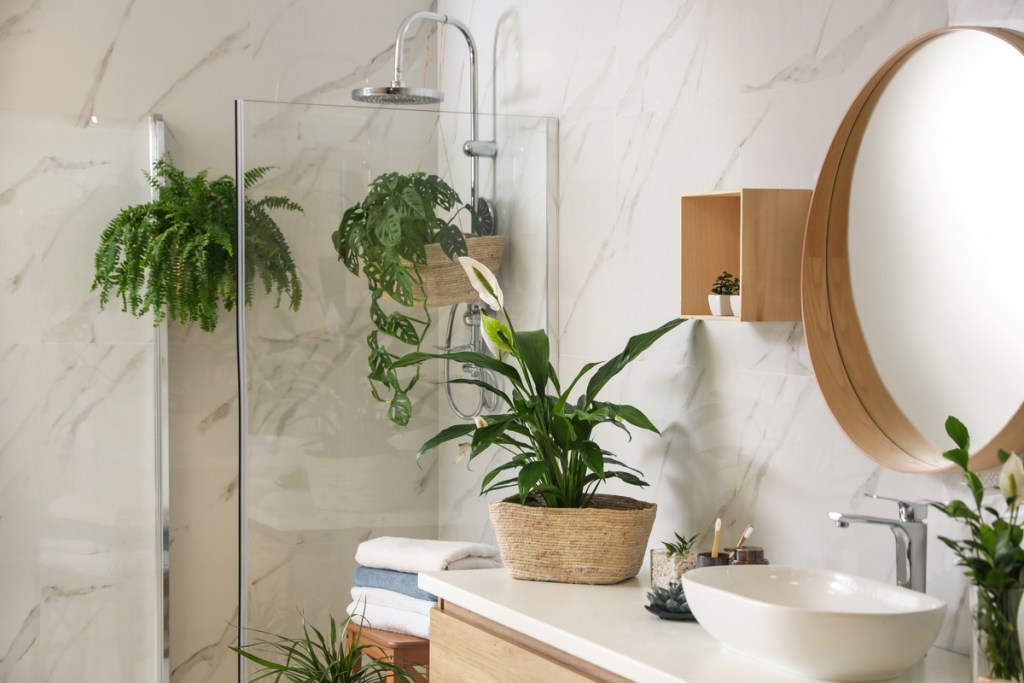
As you turn your home into a jungle, transform your bathroom into paradise with the help of shower plants. Adding extra greenery to your bathroom can switch up the ambiance for a lush vibe — it’ll be like taking a shower in the great outdoors while enjoying the comforts of your home. When picking out shower plants, keep humidity-loving species, such as ferns and figs, at the top of your list!
Curious about incorporating tropical vibes into this nook of your home? Read on to learn how to hang plants in the bathroom and how to select plants that work best for this steamy environment.
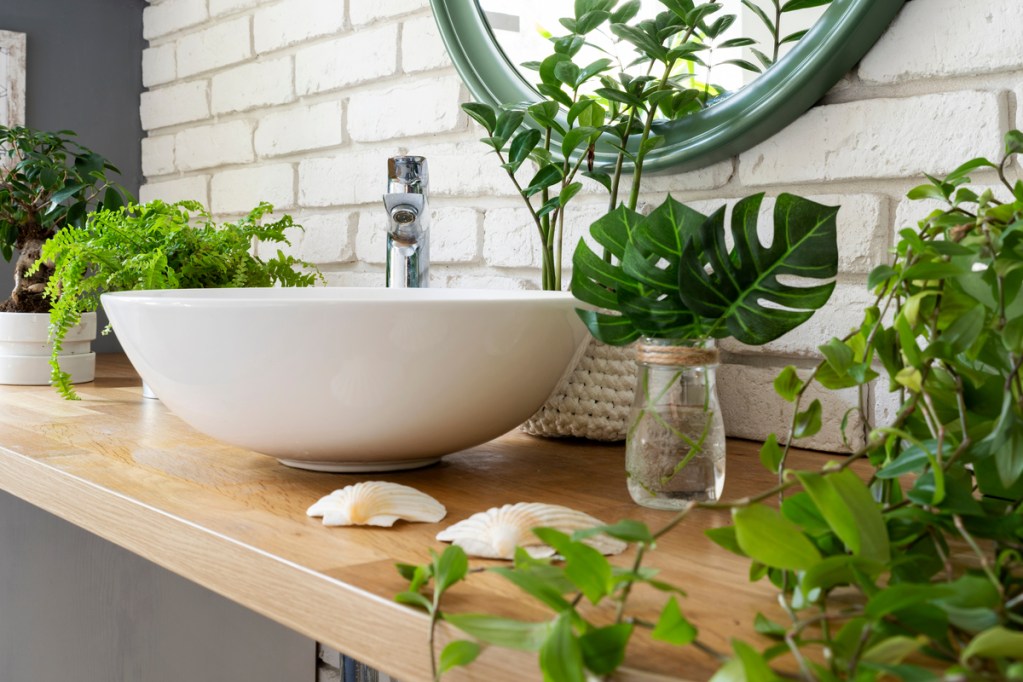
Things to consider
Humidity and light
The bathroom is ideal for houseplants because of its humidity. However, keep in mind other requirements that your plants will need. Before you bring plants into your bathroom, consider factors such as light and temperature. If your bathroom doesn’t get a lot of light, invest in supplementary grow lights or pick plants that can thrive in low-light conditions. Also, take into account your bathroom temperature since some plants don’t tolerate cold drafts.
How to hang the houseplants
Decide how you’ll hang your houseplants. Get creative with placement when building a plant paradise in the shower. Showerheads, caddies, shower rods, and curtain rods are great spots for hanging foliage, given that your planter isn’t too heavy. You can also take advantage of heavy-duty utility hooks that adhere to tiles.
To hang plants in the bathroom, plastic planters are the safest bet, as they’re lightweight and easy to clean. Make sure that you don’t place live plants where water can directly reach them. Your soil can become waterlogged, and worse, your plants can get root rot. If water touches your plants every so often, go for planters with drainage holes to let out excess water.
Now, without further ado, let’s dive into the best shower plants to bring into your bathroom!
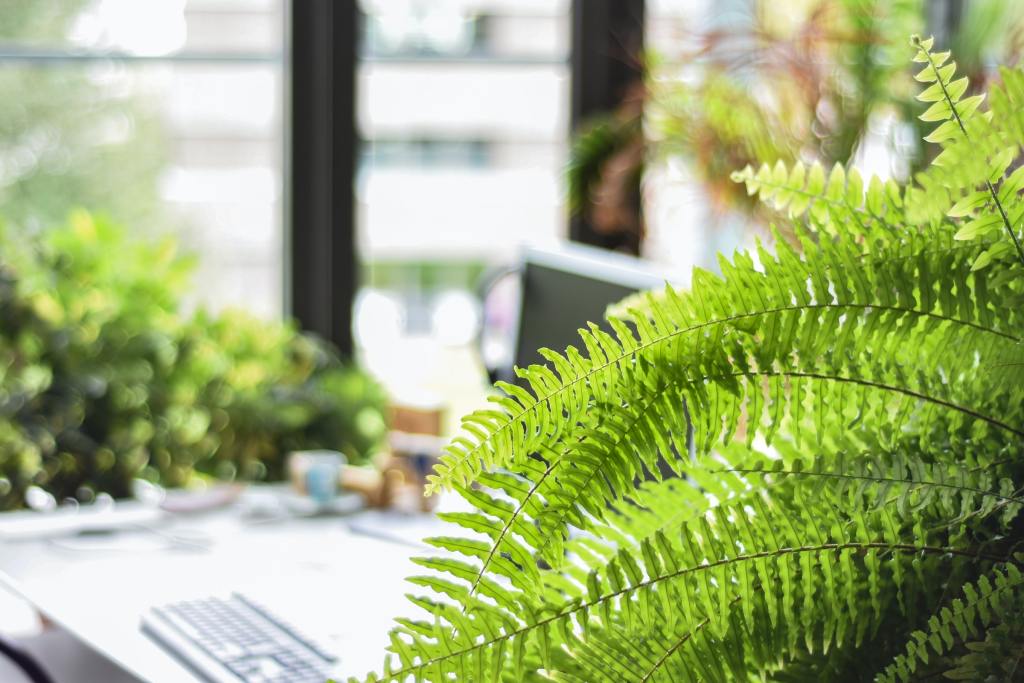
1. Ferns
Ferns make for hardy bathroom plants because they tolerate cooler temperatures and love moisture. They can also thrive in lower light conditions. Known for their full look inside of hanging baskets, Boston ferns, for example, can tolerate low light. If you have extra bright indirect light to spare, consider something like a maidenhair fern when picking out shower plants.
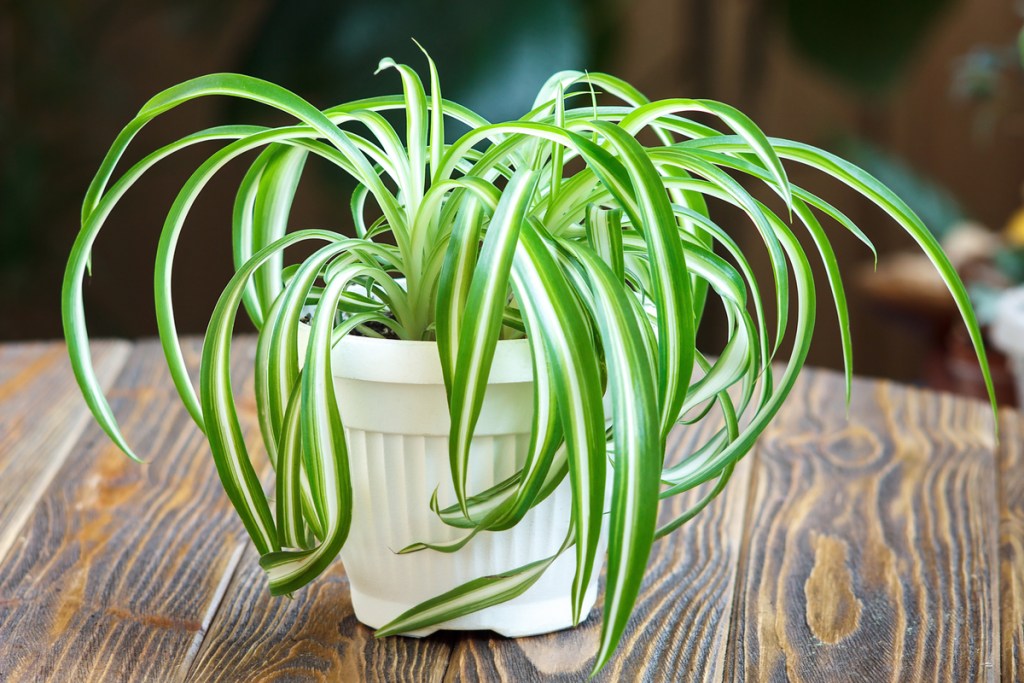
2. Spider plants
Spider plants, also known as chlorophytum comosum, are the gifts that keep on giving. They’ll continuously produce spiderette offshoots with adequate humidity and light. Keep the baby spiders on for a trailing look or trim them off to propagate and share with friends. Every so often, tiny white flowers will also bloom from the spider plant.
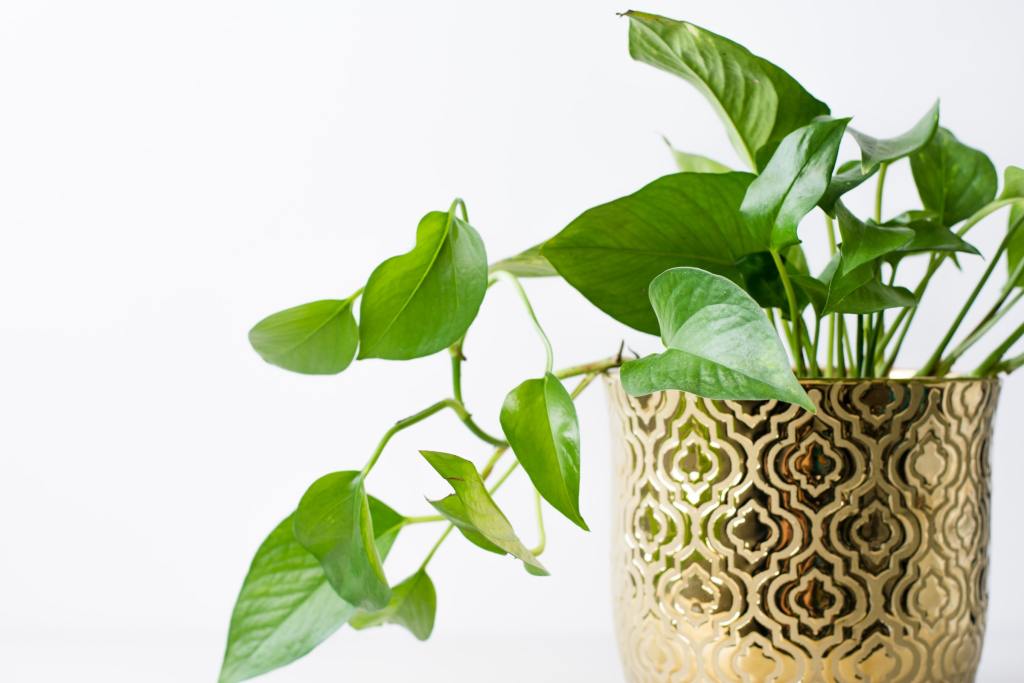
3. Pothos plants
Beloved for their easygoing nature, pothos plants thrive in a wide range of environments. They can tolerate low-light conditions but also thrive with bright indirect light. While they don’t need moisture as much as many houseplants, pothos appreciate the extra humidity in your bathroom. They shoot out leaves quickly, yielding an attractive vining look. If you like different patterns or colors, these plants are available in multiple types of variegations, whether you love a jade, golden, neon, or marble pothos.
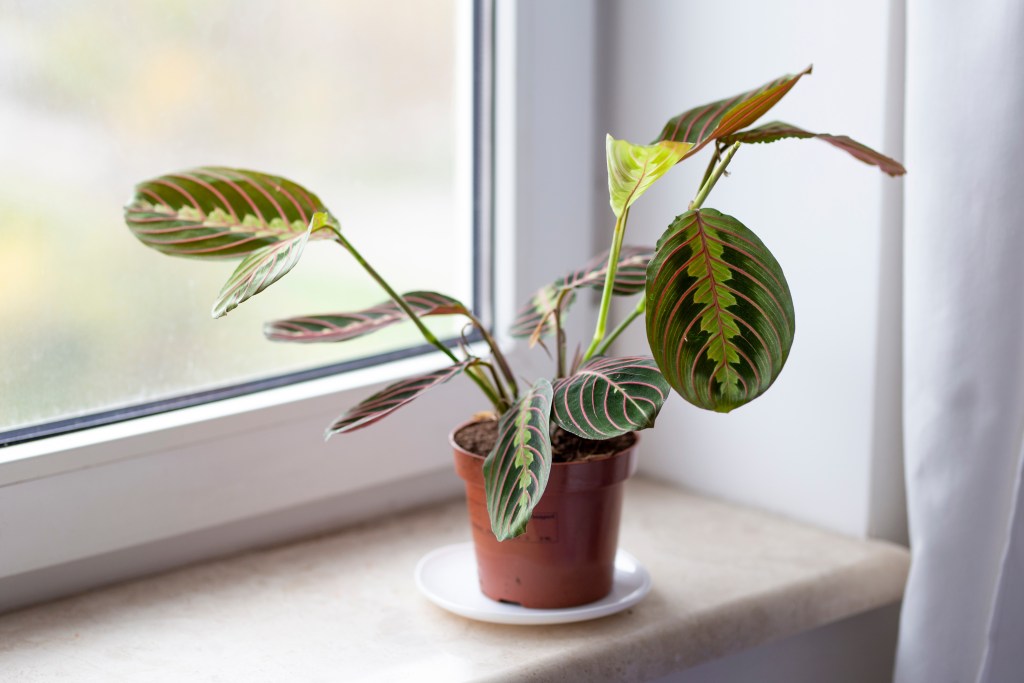
4. Prayer plants
Prayer plants have a reputation for getting crispy edges since they require high humidity, but this makes them perfect as shower companions. These plants actually encompass a variety of genera: maranta, stromanthe, ctenanthe, and calathea. They come with beautifully patterned leaves that fold up at night and lower during the daytime, resembling hands in prayer. Many are sensitive to the minerals in hard water, so install a shower filter or keep them away from direct contact with your water stream.
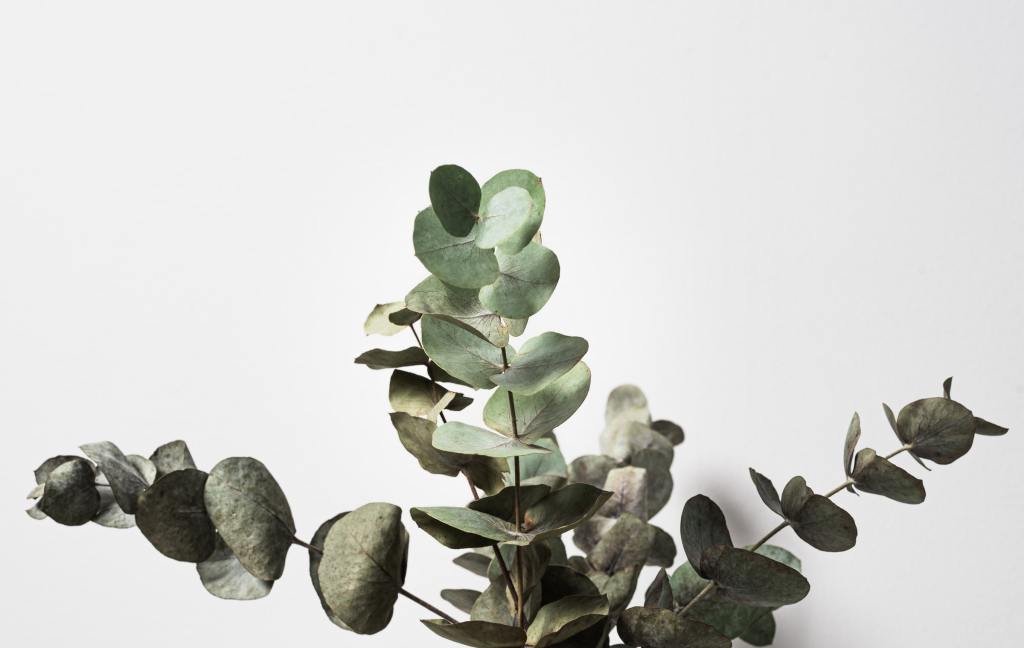
5. Eucalyptus branches
Eucalyptus plants in showers have been all over social media. Snip off eucalyptus branches and keep them in your shower for around two months until they dry out completely. For an extra rustic farmhouse flair in your bathroom, you can tie them to your showerhead with twine. When you shower, the eucalyptus releases oils that produce a soothing and aromatherapeutic smell.
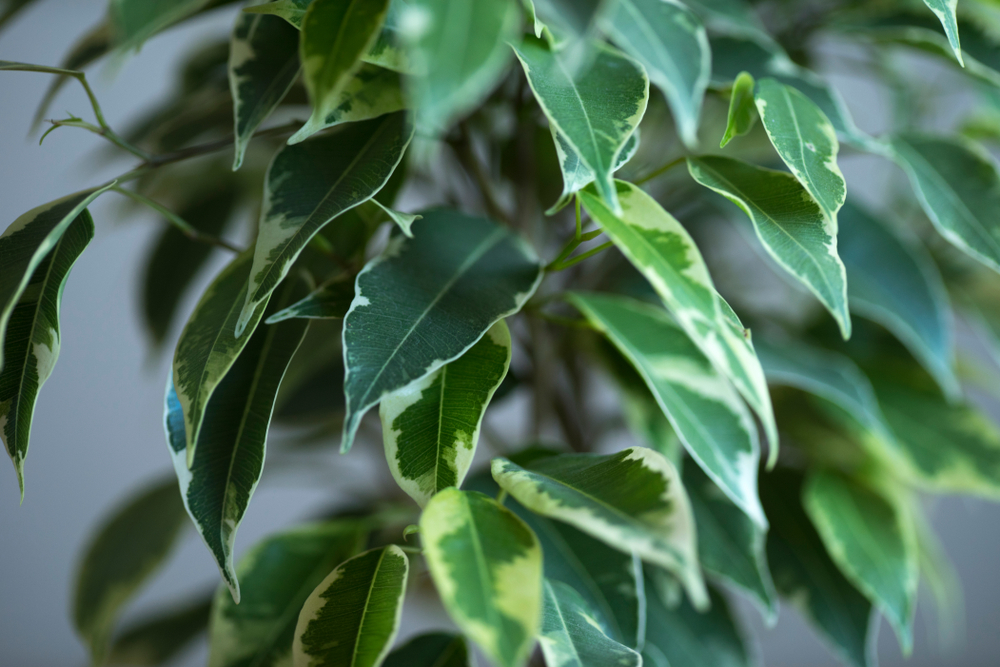
6. Weeping figs
Weeping figs, scientifically known as ficus benjamina, love a steamy environment, so they’re perfect as bathroom plants. Figs can be picky, but they’ll be happy as long as you give them bright indirect light. Keep in mind that a weeping fig may drop leaves if you leave it in a cold and drafty room, so make sure that your bathroom doesn’t get too chilly.
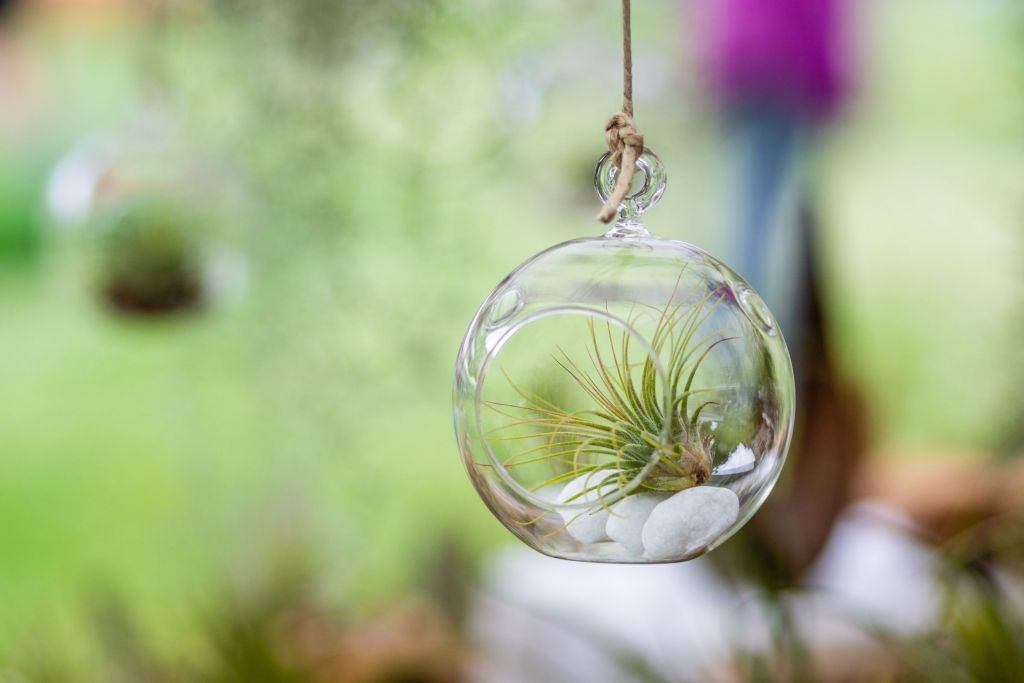
7. Air plants
To avoid tracking soil all over your shower, air plants, or Tillandsia, are a one-and-done deal. As their name implies, these plants do not need soil to thrive — they simply live off of the moisture in the air. When you have air plants in your shower, make sure they’re not in direct contact with the shower stream. Every week or so, you can soak them for up to an hour in plain water. You’ll usually know that it’s time to soak your plant when it looks a little curled up. If your air plant starts putting out offshoots, you can separate the pup and share it with a fellow indoor plant enthusiast.
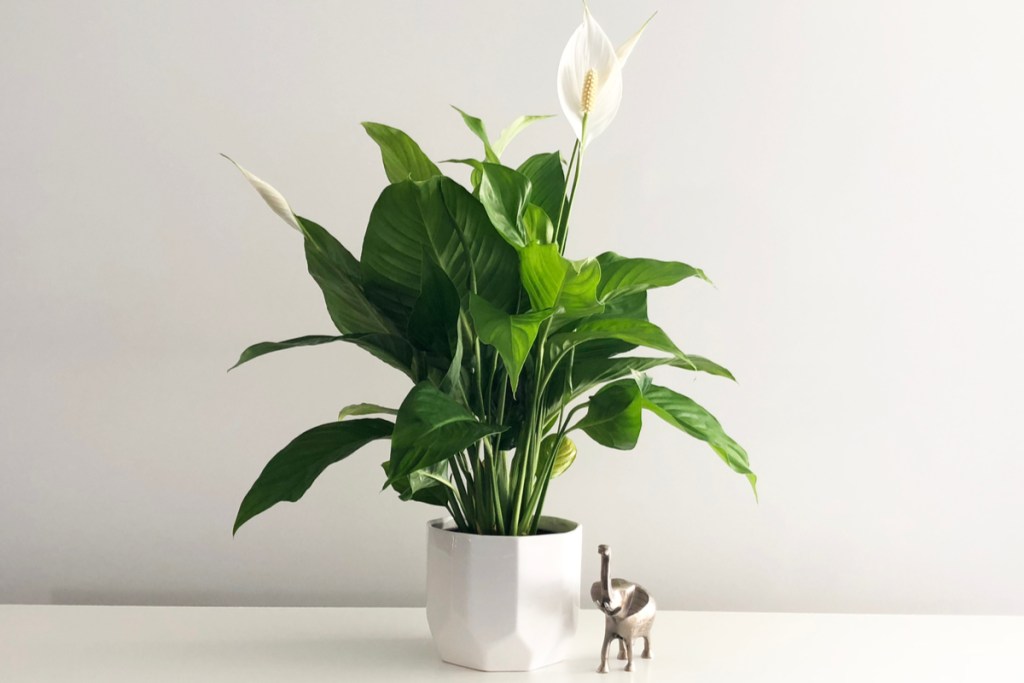
8. Peace lilies
Known for their gorgeous white spathes, peace lilies can add a delicate charm to your shower space. These plants sometimes have a reputation for being drama queens, wilting when they’re underwatered and producing brown tips when they don’t get enough humidity. Because of their high moisture needs, peace lilies are no doubt the perfect candidates for the shower environment.
Besides ensuring that your plant never dries out, give it sufficient indirect light, preferably by an east-facing window, to help it grow. Every few weeks or so, also remember to deadhead spent blooms to keep your plant looking its tidiest. Additionally, bear in mind that peace lilies can grow quite big, so they will likely do better situated on a surface than hanging from a showerhead.
With a few adjustments and tools, you can place various plants in the shower. Adding foliage to your bathroom is a win-win: Your plants love living in a humid sauna, and you can enjoy a green, spa-like environment.



